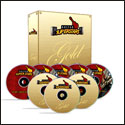Elements on Learning and Mastering a Guitar
There are many things that you must know when you are learning to play the guitar.
There are three main elements on learning and mastering a guitar and I will outline
them for you here.
Deciding to play any musical instrument is a great choice and will enhance your
life more than you can imagine. The sense of pride you will feel once you can play
your first song is amazing. And being able to impress your family and friends is
an added bonus.
The first step in learning is to get yourself a guitar you can practice on. You
may want to buy your own, or you can ask anyone you know if they have one you can
borrow. The down side to borrowing a guitar is that you get used to playing that
guitar, then eventually have to give it back. If you can afford to buy a new
guitar, you can find second hand guitars online or at a pawn shop. The great thing
about second hand guitars is that you don’t have to worry about scratching it.
Usually older guitars are already “Weathered” and have the “authentic” look
already.
The next decision you have to make is what style of guitar you want to learn to
play. Do you want electric or acoustic? To decide this, you need to consider the
style of music you want to play on your guitar. Are you into heavy rock music? If
you are then an electric guitar would probably suit your style better. If you are
more into John Meyer then an acoustic would probably be more for you. This is not
always the case, so you can always try both styles to see what you are more
comfortable playing. The one great benefit from playing an acoustic guitar is that
you can bring it with you anywhere you go. You don’t have to plug it in like and
electric, and you don’t need an amp to be able to hear what you are playing.
The final element on learning and mastering the guitar is to find yourself an
audience. If you know someone that can actually play the guitar, then ask them if
you can play to them once or twice a week. Have them critique you. Tell you the
good points of your playing, and also the things you need to work on. Its good to
have someone who has already mastered the guitar as they will be able to see your
mistakes that a “non-guitar player” wont see. But if you don’t know anyone that can
play, ask a friend or someone in your family that you know will be honest with you.
Now you have the main components that will help you while learning the guitar,
next you need to actually start playing. You now have the guitar that you are
going to learn on. Your next step is to make sure you are holding your guitar
correctly. Sitting is the most common position to be in when playing the guitar,
but some may find standing easier. You decide which is best for you. If you are
choosing the sitting position, you will need to rest the body of the guitar on your
leg. Your right hand will be your strumming hand (if you are a right handed
player, and opposite if you are left handed) and your left will the hand that will
move to play the notes. Make sure you have a good posture while playing so you
don’t strain any muscles.
Weather you have decided to learn through books, DVD’s or online courses, make
sure you are following all the steps that are given to you. Don’t skip ahead. They
are written that way for a reason. If you practice you can master the guitar in no
time, just take your time and do it right the first time.
Once you know the basic chords, choose one or two EASY songs that you want to learn
to play. Don’t start off by choosing a hard song. This will only disappoint you
when you have a hard time mastering them. Choose a song that has only a few
chords. Many songs are written with a variation of 3 or 4 basic chords. Start
with these then work your way to more challenging ones.
If you are an OK singer you should practice doing so while you play. This will
assist you in timing and knowing when chord changes are needed.
Never give up. You made the choice to learn to play the guitar and no-one said it
would be easy. Now only you can decide if you are going to follow through on that.
Your fingers will be sore at first, but that’s a sign of determination and great
practice. Eventually they will build up callouses and no longer be painful.
If you follow all these elements on learning and mastering the guitar, in no time
you will be challenging yourself with more and more difficult songs.

 February 18, 2011
February 18, 2011 



